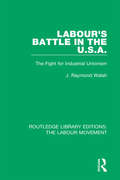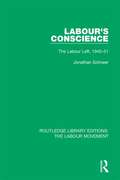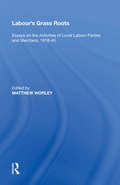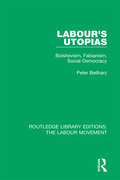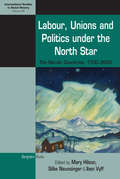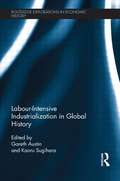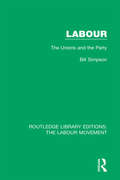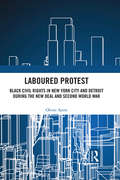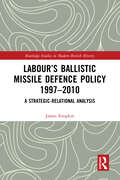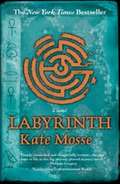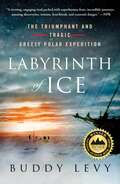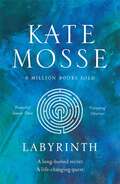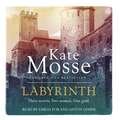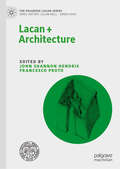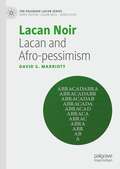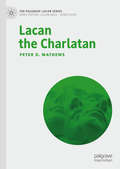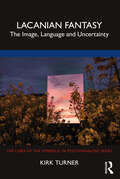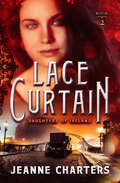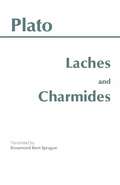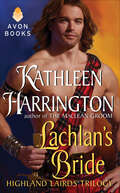- Table View
- List View
Labour's Battle in the U.S.A: he Fight for Industrial Unionism (Routledge Library Editions: The Labour Movement #42)
by J. Raymond WalshFirst published in 1938. This study of the labour crisis in the USA consists of interviews with leaders and members of labour unions, unorganised workers, businessmen, and those in positions of public responsibility. The author explores the foundations of the crisis, and examines the possible issues that he predicted the US labour force were going to encounter. This title will be of interest to scholars and students of political and labour history.
Labour's Conscience: The Labour Left, 1945-51 (Routledge Library Editions: The Labour Movement #30)
by Jonathan SchneerFirst published in 1988. The years 1945-51 were crucial to the Labour Party and the Left in Britain. This elegantly written book traces the gradual and painful disillusionment of the Labour Left with the Attlee governments and analyses the alternative, more militant, programme which the Labour Left devised. Never an organised bloc, the author argues that they are best understood as Labour’s conscience – a militant tendency is the true sense of the words. This title will be of interest to scholars and students of political history.
Labour's Grass Roots: Essays on the Activities of Local Labour Parties and Members, 1918�5 (Studies In Labour History Ser.)
by Matthew WorleyThe period between 1918 and 1945 witnessed dynamic social and economic developments in Britain as the notion of a government controlled economy and welfare state took root. In order to be understood, this shift in the political landscape needs to be seen in context of the growth of mass political movements and the implementation of fuller democratic processes in the aftermath of the Great War. But whilst much has been written on the rise of the Labour Party, the decline of the Liberals and the domination of the Conservatives in the sphere of high politics, much less research has been done on the local or regional experience of Britain's main political parties between the wars. This volume brings together ten essays that together provide an introduction to the role, influence and effectiveness of Labour Party activists across Britain. Taking a systematic and comparative approach that examines a range of representative areas, this volume is more than simply a collection of local studies. Instead it utilises the local to develop and illuminate the wider dynamics at work inside the Labour Party. By emphasising the role of the party membership, Britain's social and political evolution can be reconstructed from grass-roots level, taking into account the priorities and expectations of the people who sustained and cultivated the nation's social-political base. By addressing reoccurring issues of interest to labour historians, such as gender, nationalism, the co-operative movement and trade unionism, through the locus of regionalism and local party activity, this volume will not only provide scholars with a better understanding of the Labour Party, but should stimulate similar much needed research into other political parties and organisations.
Labour's Utopias: Bolshevism, Fabianism, Social Democracy (Routledge Library Editions: The Labour Movement #2)
by Peter BeilharzFirst published in 1992. The collapse of communist rule in Eastern Europe has led to a widespread view that socialism is a dead, or at least dying, force. Labour’s Utopias argues that this assumption is based on the popular conception that socialism’s various traditions are simply different means to a common end. The author looks at three strands of socialism – Bolshevism, Fabianism and German Social Democracy – in order to assess whether this argument is justified, concluding that in fact each has a distinct vision of an ideal future. This study will appeal to scholars and students of politics, history and socialism, and to all those with an interest in the alternatives to capitalism.
Labour, Unions and Politics under the North Star: The Nordic Countries, 1700-2000 (International Studies in Social History #28)
by Mary Hilson Silke Neunsinger Iben VyffDenmark, Finland, Iceland, Norway, and Sweden today all enjoy a reputation for strong labour movements, which in turn are widely seen as part of a distinctive regional approach to politics, collective bargaining and welfare. But as this volume demonstrates, narratives of the so-called “Nordic model” can obscure the fact that experiences of work and the fortunes of organized labour have varied widely throughout the region and across different historical periods. Together, the essays collected here represent an ambitious intervention in labour historiography and European history, exploring themes such as work, unions, politics and migration from the early modern period to the twenty-first century.
Labour-Intensive Industrialization in Global History
by Gareth Austin Kaoru Sugihara<p>The prevailing view of industrialization has focussed on technology, capital, entrepreneurship and the institutions that enabled them to be deployed. Labour was often equated with other factors of production, and assigned a relatively passive role. Yet it was labour absorption and the improvement of the quality of labour over the course of several centuries that underscored the timing, pace and quality of global industrialization. <p>While science and technology developed in the West and whereas the use of fossil fuels, especially coal and oil, were vital to this process, the more recent history has been underpinned by the development of comparatively resource- and energy-saving technology, without which the diffusion of industrialization would not have been possible. <p>The labour-intensive, resource-saving path, which emerged in East Asia under the influence of Western technology and institutions, and is diffusing across the world, suggests the most realistic route humans could take for a further diffusion of industrialization, which might respond to the rising expectations of living standards without catastrophic environmental degradation.</p>
Labour: The Unions and the Party (Routledge Library Editions: The Labour Movement #31)
by Bill SimpsonFirst published in 1973. In this study, the author adopts a historical approach, tracing the evolution of socialist thinking during the past century and relating this to the growth of the union movement. The Taff Vale judgement, the Osborne judgement, the roles of the SDF, the Fabians, and the ILP - these episodes are re-examined from a novel perspective, and the historical material is frequently illuminated by the use of contemporary analogies. The second half of the book presents an analytical study of differing union political theories and attitudes against the modern industrial background. Here the Marxist case is studied in depth and contrasted with the views of the Social Democrats. The author then considers the ownership and control of the economy, industrial relations, prices and incomes and inflation, making it clear where he feels the movement should stand on the key political issues of today. Finally, the book suggests the way in which the Labour Party and the trade unions should organise for power in the country.
Laboured Protest: Black Civil Rights in New York City and Detroit During the New Deal and Second World War
by Oliver AyersHistorians have long realized the US civil rights movement pre-dated Martin Luther King Jr., but they disagree on where, when and why it started. Laboured Protest offers new answers in a study of black political protest during the New Deal and Second World War. It finds a diverse movement where activists from the left operated alongside, and often in competition with, others who signed up to liberal or nationalist political platforms. Protestors in this period often struggled to challenge the different types of discrimination facing black workers, but their energetic campaigning was part of a more complex, and ultimately more interesting, movement than previously thought.
Labour’s Ballistic Missile Defence Policy 1997-2010: A Strategic Relational Analysis (Routledge Studies in Modern British History)
by James SimpkinThis book uses the Strategic-Relational Approach to explain how the Labour governments of Tony Blair and Gordon Brown integrated the United Kingdom into the US Ballistic Missile Defence system in order to maintain national security and to uphold the ‘Special Relationship’ while at the same time recognising that voters were in general opposed to missile defence. Labour’s Ballistic Missile Defence Policy 1997-2010 examines how the Labour administration was tasked with navigating a domestic political environment in which they had to appear tough on defence in general in order to appeal to a broader range of the electorate while recognising that voters were opposed to missile defence in particular. This book seeks to answer the question of why the centre-left government of Tony Blair and Gordon Brown, elected on a mandate of multilateralism in international relations and espousing an ‘ethical dimension’ to foreign policy, committed the UK to US ballistic missile defence; an internationally divisive military project associated with the US Republican Party and George W. Bush in particular. This book is essential for students and researchers interested in British military history, international relations, strategic studies, British politics, Labour politics, and political theory.
Labyrinth (Languedoc #1)
by Kate MosseJuly 2005. In the Pyrenees mountains near Carcassonne, Alice, a volunteer at an archaeological dig, stumbles into a cave and makes a startling discovery-two crumbling skeletons, strange writings on the walls, and the pattern of a labyrinth. Eight hundred years earlier, on the eve of a brutal crusade that will rip apart southern France, a young woman named Alais is given a ring and a mysterious book for safekeeping by her father. The book, he says, contains the secret of the true Grail, and the ring, inscribed with a labyrinth, will identify a guardian of the Grail. Now, as crusading armies gather outside the city walls of Carcassonne, it will take a tremendous sacrifice to keep the secret of the labyrinth safe.
Labyrinth of Ice: The Triumphant and Tragic Greely Polar Expedition
by Buddy LevyNational Outdoor Book Awards WinnerWinner of the BANFF Adventure Travel Award“A thrilling and harrowing story. If it’s a cliche to say I couldn’t put this book down, well, too bad: I couldn’t put this book down.” —Jess Walter, bestselling author of Beautiful Ruins“Polar exploration is utter madness. It is the insistence of life where life shouldn’t exist. And so, Labyrinth of Ice shows you exactly what happens when the unstoppable meets the unmovable. Buddy Levy outdoes himself here. The details and story are magnificent.” —Brad Meltzer, bestselling author of The First Conspiracy: The Secret Plot to Kill George Washington Based on the author's exhaustive research, the incredible true story of the Greely Expedition, one of the most harrowing adventures in the annals of polar exploration. In July 1881, Lt. A.W. Greely and his crew of 24 scientists and explorers were bound for the last region unmarked on global maps. Their goal: Farthest North. What would follow was one of the most extraordinary and terrible voyages ever made. Greely and his men confronted every possible challenge—vicious wolves, sub-zero temperatures, and months of total darkness—as they set about exploring one of the most remote, unrelenting environments on the planet. In May 1882, they broke the 300-year-old record, and returned to camp to eagerly await the resupply ship scheduled to return at the end of the year. Only nothing came. 250 miles south, a wall of ice prevented any rescue from reaching them. Provisions thinned and a second winter descended. Back home, Greely’s wife worked tirelessly against government resistance to rally a rescue mission.Months passed, and Greely made a drastic choice: he and his men loaded the remaining provisions and tools onto their five small boats, and pushed off into the treacherous waters. After just two weeks, dangerous floes surrounded them. Now new dangers awaited: insanity, threats of mutiny, and cannibalism. As food dwindled and the men weakened, Greely's expedition clung desperately to life.Labyrinth of Ice tells the true story of the heroic lives and deaths of these voyagers hell-bent on fame and fortune—at any cost—and how their journey changed the world.
Labyrinth: The Pursuit of the Letelier Assassins
by Taylor Branch Eugene M. PropperInvestigation and prosecution of a car bombing which killed, among others, a Chilean Ambassador.
Labyrinth: The epic Richard & Judy read from the Number One bestselling author
by Kate MosseThree secrets. Two women. One Grail . . . 10th Anniversary Edition of the spellbinding No. 1 bestselling novel from the author of THE CITY OF TEARSJuly 1209: in Carcassonne a 17-year-old girl is given a mysterious book by her father which he claims contains the secret of the true Grail. Although Alais cannot understand the strange words and symbols hidden within, she knows that her destiny lies in keeping the secret of the labyrinth safe . . .July 2005: Alice Tanner discovers two skeletons in a forgotten cave in the French Pyrenees. Puzzled by the labyrinth symbol carved into the rock, she realises she's disturbed something that was meant to remain hidden. Somehow, a link to a horrific past - her past - has been revealed.
Labyrinth: The epic Richard & Judy read from the Number One bestselling author
by Kate MosseThree secrets. Two women. One Grail . . . 10th Anniversary Edition of the spellbinding No. 1 bestselling novel from the author of THE CITY OF TEARSJuly 1209: in Carcassonne a 17-year-old girl is given a mysterious book by her father which he claims contains the secret of the true Grail. Although Alais cannot understand the strange words and symbols hidden within, she knows that her destiny lies in keeping the secret of the labyrinth safe . . .July 2005: Alice Tanner discovers two skeletons in a forgotten cave in the French Pyrenees. Puzzled by the labyrinth symbol carved into the rock, she realises she's disturbed something that was meant to remain hidden. Somehow, a link to a horrific past - her past - has been revealed.
Labyrinth: The epic Richard & Judy read from the Number One bestselling author
by Kate MosseThree secrets. Two women. One Grail . . . The spellbinding No. 1 bestselling novel.July 1209: in Carcassonne a 17-year-old girl is given a mysterious book by her father which he claims contains the secret of the true Grail. Although Alais cannot understand the strange words and symbols hidden within, she knows that her destiny lies in keeping the secret of the labyrinth safe . . .July 2005: Alice Tanner discovers two skeletons in a forgotten cave in the French Pyrenees. Puzzled by the labyrinth symbol carved into the rock, she realises she's disturbed something that was meant to remain hidden. Somehow, a link to a horrific past - her past - has been revealed.Read by Anton Lesser and Emilia Fox(p) 2006 Orion Publishing Group
Lacan + Architecture (The Palgrave Lacan Series)
by John Shannon Hendrix Francesco ProtoThis book seeks to revise and revive architectural theory through psychoanalysis as well as to apply psychoanalytic theory to architecture. Its authors argue for Lacan’s central importance for a comprehensive theory of building and suggest how architectural theory might offer new resources for psychoanalytic theorists. They address both the perceived crisis in the contemporary state of architecture and architectural theory and crises in society at large, including political and economic fracture and instability and threats to mental health and well-being. It offers fresh insights to architects, architectural educators and practitioners, scholars of psychoanalysis, and anyone interested in the human condition in relation to the built environment.
Lacan Noir: Lacan and Afro-pessimism (The Palgrave Lacan Series)
by David S MarriottThis book explores how Jacques Lacan has influenced Black Studies from the 1950s to the present day, and in turn how a Black Studies framework challenges the topographies of Lacanianism in its understanding of race. David Marriott examines how a contemporary Black Studies perspective might respond to the psychoanalysis of race by taking advantage of the recent revitalization of Lacanianism in its speculative, metaphysical form. While the philosophical side of the debate makes a plea for a new universalism, this book proposes a Lacanian reassessment of the notion of race, a notion distinct from culture, language, religion, and identity. It argues that it is possible to re-establish the theoretical relation between capitalism, anti-blackness, and colonialism, by reassessing the links between Lacanian psychoanalysis and three main domains of black inquiry: mastery, knowledge, and embodiment. The book offers a strikingly original rereading of the place of Lacan in both Fanon Studies and Afro-pessimism. It will appeal to students and scholars of Black Studies, Cultural Studies, Critical Theory and Philosophy.
Lacan the Charlatan (The Palgrave Lacan Series)
by Peter D. MathewsThis book sets out to determine the validity of an accusation made against Jacques Lacan by Noam Chomsky in an interview in 1989. He stated that Lacan was a “charlatan” – not that his ideas were flawed or wrong, but that his entire discourse was fraudulent, an accusation that has since been repeated by many other critics. Examining the arguments of key anti-Lacanian critics, Mathews weighs and contextualizes the legitimacy of Lacan’s engagements with structural linguistics, mathematical formalization, science, ethics, Hegelian dialectics, and psychoanalysis. The guiding thread is Lacan’s own recurrent interrogation of authority, which inhabits an ambiguous zone between mastery and charlatanry. This book offers a novel contribution to the field for students and scholars of psychoanalysis, philosophy, sociology, critical and literary theory.
Lacanian Fantasy: The Image, Language and Uncertainty
by Kirk TurnerLacanian Fantasy addresses the question of how fantasy developed as a psychological concept, particularly as influenced by Sigmund Freud and Jacques Lacan. Kirk Turner moves thematically, from childhood to adulthood, and chronologically, from Freud’s earliest theories to Lacan’s most complex statements on fantasy towards the end of his career. He explores not only the variations that the concept has undergone throughout its history – from Ancient Greek discourse around phantasia to the present day – but also the changing consequences of its applications. Lacanian Fantasy includes further insights on our current predicament: the age of the social media image and fantasy in the uncertain ‘locked down’ world of a pandemic. Spanning numerous examples, both historical and recent, this book explores relatable forms of fantasy life. In bridging psychology and philosophy, as well as gender and sexuality studies, it ultimately opens new perspectives on fantasy. This book will be of interest to psychoanalytic practitioners and humanities scholars, as well as students interested in critical theory.
Lace Balcony
by Johanna NichollsVianna Francis, known in the colony as 'The Sydney Venus', is a notorious young mistress in keeping to a former gentleman convict, who uses her to entice wealthy men to his gaming tables. A woman of mystery, Vianna is a magnet for scandal. Was she the mistress of a Royal duke? A lady's maid who learned the tricks of the world's oldest profession when in service to a Parisian courtesan? Or the widow of a young man executed on the gallows? Men of high rank are determined to possess this passionate, mercenary beauty. The L'Estrange half-brothers were born only months apart. One brother is an idealistic dreamer, the other a volatile adventurer. And the rivals have two things in common - a fatal attraction to get-rich schemes that run afoul of the law -- and their obsession with Vianna.
Lace Balcony
by Johanna NichollsVianna Francis, known in the colony as 'The Sydney Venus', is a notorious young mistress in keeping to a former gentleman convict, who uses her to entice wealthy men to his gaming tables. A woman of mystery, Vianna is a magnet for scandal. Was she the mistress of a Royal duke? A lady's maid who learned the tricks of the world's oldest profession when in service to a Parisian courtesan? Or the widow of a young man executed on the gallows? Men of high rank are determined to possess this passionate, mercenary beauty. The L'Estrange half-brothers were born only months apart. One brother is an idealistic dreamer, the other a volatile adventurer. And the rivals have two things in common - a fatal attraction to get-rich schemes that run afoul of the law -- and their obsession with Vianna.
Lace Curtain (Daughters of Ireland #Vol. 2)
by Jeanne ChartersThe daughter of Irish immigrants and the son of an African slave forge their own destiny in Boston, in this compelling sequel to Shanty Gold.Boston, 1870. Nellie&’s mom and Neo&’s father met on a coffin ship sailing from Ireland to America, a journey they barely survived. Having heard this tale since childhood, the two teenagers now crave an adventure of their own. When an unfounded rumor gets Nellie suspended from school and puts her future in jeopardy, the lifelong friends flee to New York City to join a circus. And though their escapade is short-lived, it teaches both of them about courage, kindness, and acceptance. Rising above her scandalous background, Nellie inches toward her dream of becoming a teacher, while Neo battles against prejudice and hatred to marry the woman he loves. As they struggle with the hopes and expectations laid upon them by their parents, they&’ll navigate through tragedy and betrayal on a journey towards their hearts&’ true desires.Praise for Shanty Gold &“Charters interweaves many important topics—immigration, civil rights, women&’s rights—into her exciting novel . . . Gripping.&” —Kirkus Reviews &“The story of a young Irish girl&’s struggles told with an authentic, historically accurate voice.&” —Sallie Bissell, author of the Mary Crow series &“To read Shanty Gold is to immerse oneself in a wild ride of discovery, romance, and the search for a new way of life. . . . A tale that will grab your heart and senses, with twists and turns along the way.&” —Susan Blexrud, author of the Fang series
Laches and Charmides
by Plato Rosamond Kent SpragueRosamond Kent Sprague's translations of the Laches and Charmides are highly regarded, and relied on, for their lucidity and philosophical acuity. This edition includes notes by Sprague and an updated bibliography.
Lachhaman Gun Gatha: लछमन गुन गाथा
by Rajendra Arun and Vinod Bala Arunलछमन गुन गाथा एक किताब है जिसमें लक्ष्मण के जीवन और चरित्र का चित्रण किया गया है. इस किताब के बारे में कुछ लोगों का कहना है कि यह बहुत अच्छी है और इससे चरित्र को मज़बूत करने की ताकत मिलती है. इस किताब में लक्ष्मण को महापराक्रमी, श्रेष्ठ योद्धा, बुद्धिमान, धर्मज्ञ, नीतिज्ञ, शास्त्रज्ञ, वाक्-निपुण, दूरदर्शी, सेवाव्रती, आत्मवान्, जितेंद्रिय, परम संयमी, वैराग्यवान् और सदाचारी बताया गया है.
Lachlan's Bride: Highland Lairds Trilogy (The Highland Lairds Trilogy #2)
by Kathleen HarringtonThe much-anticipated second book in the Highland Lairds Trilogy is here! First introduced in The MacLean Groom, Lachlan MacRath is a powerful laird, a mysterious pirate . . . and a legendary lover.Lady Francine Walsingham cannot believe this warrior is to be her escort into Scotland. It is whispered that Lachlan MacRath has magical powers . . . how else do you explain his success as a pirate? But trust him she must, for a treacherous plot is about to reveal all her secrets . . . and Francine has no choice but to act as his lover to keep her enemies at bay.When Lachlan first sees Francine, the blonde beauty stirs his blood like no woman ever before. As luck would have it, they must now play the besotted couple so he can protect her . . . and Lachlan is determined to use all his seductive prowess to properly woo her into his bed.
